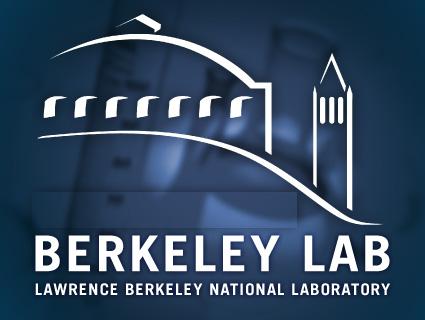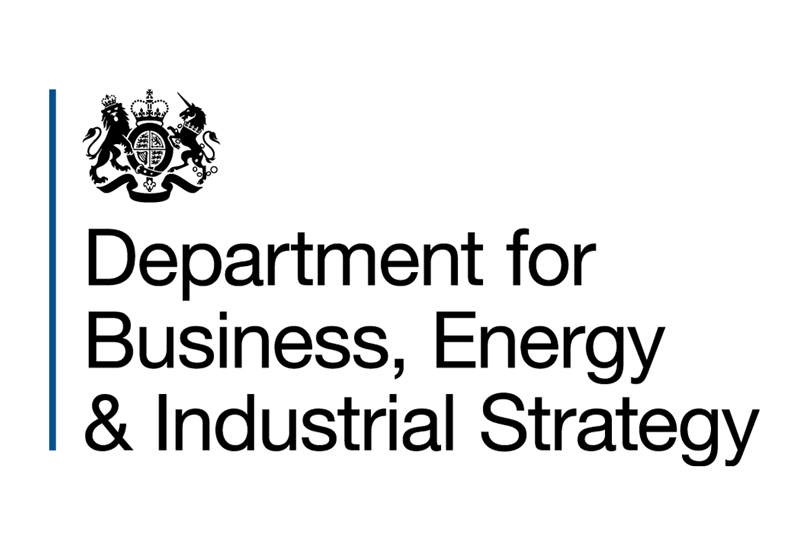The actinides are chemical elements in the bottom row of the periodic table. Uranium is the first actinide in the row. They have uses that range from medical and industrial applications to the generation of nuclear power. Unfortunately, the separation of a particular pure actinide from contaminants and other actinides has been difficult, time consuming and expensive.
Researchers at the U.S. Department of Energy’s Lawrence Berkeley National Laboratory have announced the development of a new actinide separation method that is enormously more efficient that current conventional separation methods. The new method will allow faster discovery of new elements, easier nuclear fuel reprocessing and a better way to radioisotopes for cancer treatment.
The research has been published in the Nature Communications journal under the title Ultra-Selective Ligand-Driven Separation of Strategic Actinides. Gauthier Deblonde, Abel Ricano, and Rebecca Abergel of Berkeley Lab’s Chemical Sciences Division are the authors of the article. The authors said, “The proposed approach offers a paradigm change for the production of strategic elements.”
Rebecca Abergel is the lead of Berkeley Lab’s Heavy Element Chemistry group. She said, “Our proposed process appears to be much more efficient than existing processes, involves fewer steps, and can be done in aqueous environments, and therefore does not require harsh chemicals. I think this is really important and will be useful for many applications.”
Berkeley Lab is one of only a few institutions around the globe which studies nuclear and chemical properties of the heaviest elements. Most of the actinides were actually discovered at Berkeley Lab. Abergel’s research group has publised important discoveries about berkelium and plutonium. They have also published research reports on treatments for radioactive contamination.
“Separation factor” is a technical term that measures how well a particular element can be separated from a mixture of elements. The new separation method achieves separation factors that many orders of magnitude higher than currently used methods. Abergel said, “The higher the separation factor, the fewer contaminants there are. Usually when you purify an element, you’ll go through the cycle many times to reduce contaminants.” With a much higher separation factor, the process does not have to be repeated as many times and there is a big savings in solvents that are used. One process they tested was reduced from twenty five steps to two steps.
The first demonstration of the new separation method from Berkeley Lab was to produce purified actinium-225 which is an isotope that has shown great promise in radio-therpeutic applications. When actinium-225 is delivered to the turmors, cancer cells die but healthy cells are not affected.
DoE has an Isotope Program which is dedicated to the production of actinium-225 through the fleet of particle accelerators at the U.S. national laboratories. This new separation method may be a preferable alternative to the chemical separation processes that are currently being developed. Aberrgel said, “With any production process, you need to purify the final isotope. Our method could be used right after production, before distribution.”
Two other actinides, plutonium and berkelium, were purified in this study. Plutonium is created in nuclear power reactors as part of the fission product chains. In order to reuse the unburned uranium in the spent nuclear fuel, it is necessary to remove the plutoium. This new separation process could be a major step in developing a cheap and reliable separation method for the plutonium in spent nuclear fuel. Plutonium-238 can be used as a power source in thermal batteries for deep space missions such as the Mars rovers.
Berkelium is a very important isotope for scientific research. It can and has been used to discover new elements.
The new separation method relies on small molecules called synthetic ligands that very efficiently bind to metal atoms. They can be highly selective in binding to positive metal ions based on the size and charge of the ions.
Abergel says that the next stage of their research will involve using the new process to purify other medical radioisotopes. She said, “Based on what we’ve seen, this new method can really be generalized, as long as we have different charges on the metals we want to separate. Having a good purification process available could make everything easier in terms of post-production processing and availability.”tion for the ThorCon.
Blog
-

Lawrence Berkeley National Laboratory Developing A New Separation Method For Actinides
-

Geiger Readings for Jun 06, 2019
Ambient office = 90 nanosieverts per hour
Ambient outside = 115 nanosieverts per hour
Soil exposed to rain water = 118 nanosieverts per hour
Tomato from Central Market = 67 nanosieverts per hour
Tap water = 93 nanosieverts per hour
Filtered water = 83 nanosieverts per hour
-

The U.K. Parliament Heard Arguments For Transparency In The Diversion Of Funds To Nuclear Submarine Construction
Through the decades since the development of nuclear weapons and commercial nuclear power, there have been charges that some governments supported the peaceful use of nuclear energy in order to obtain additional funding for nuclear weapons programs. This practice was blamed on the high cost of nuclear research and the reluctance of governments to allocate sufficient funds to nuclear weapons programs.
Now nuclear experts in the United Kingdom are saying that household electricity bills are being inflated by the government in order to provide more funding for nuclear submarines. Some say that nuclear power is so expensive that it should be replaced with much cheaper renewable energy. Others say that nuclear power generation is an important domestic source of electricity and any spending on military programs is not significant. Recently, the members of Parliament on the Business Select Committee were told by scientists at the University of Sussex that the government should be transparent about the interdependence of the civilian commercial nuclear power program and the nuclear defense industry.
Professor Andy Stirling from the University of Sussex says that one motivation of the government for making the civilian power consumers pay more for their electricity is because it helps to support the supply chain and skills base for companies such ass Rolls Royce and Babcock which work on the construction and maintenance of nuclear submarines. He said: “It is clear that the costs of maintaining nuclear submarine capabilities are insupportable without parallel consumer-funded civil nuclear infrastructures. The accelerating competitiveness of renewable energy and declining viability of nuclear power are making this continuing dependency increasingly difficult to conceal.”
Rolls Royce has been pressing the government to agree to develop a fleet of small modular nuclear reactors for power generation in the U.K. This civilian technology could also be used for submarines.
A spokesperson for the U.K. Department for Business, Energy & Industrial Strategy (BEIS) said, “We believe having a diverse energy mix is the best way of ensuing energy security while allowing us to meet our climate commitments. Nuclear has an important role to play as we transition to a low-carbon economy, but as with any technology, it must represent good value for money for the taxpayer and consumer.”
A source on the BEIS committee told reporters that the presentation by the University of Sussex was “persuasive and well-researched.” It is expected that the committee will release the University of Sussex presentation to the public. The committed is preparing to discuss the question of whether the U.K. really needs nuclear power for energy security. Now that the actual cost of nuclear power has been made public, the debate is of greater significance.
In the early days of nuclear power, it was claimed that electricity generated by nuclear reactors would be too cheap to meter. However, at present, the cost of electricity from offshore wind farms is about seventy dollars per megawatt as compared to an estimated price of one hundred and seventeen dollars for electricity from the Hadley Point C reactor currently under construction.
The U.K. government finds itself in a bind. If they won’t admit the truth about the interdependence of civil and military nuclear programs, it will be accused of trying to hide an obvious connection. On the other hand, if they do admit the interdependence, then some consumer groups will reject supporting nuclear submarines with consumer electric bills. -

Geiger Readings for Jun 05, 2019
Ambient office = 97 nanosieverts per hour
Ambient outside = 88 nanosieverts per hour
Soil exposed to rain water = 89 nanosieverts per hour
Cauliflower from Central Market = 53 nanosieverts per hour
Tap water = 80 nanosieverts per hour
Filtered water = 70 nanosieverts per hour
-

Nuclear Weapons 685 – German Intelligence Agencies Report That Iran Is Trying To Develop Nuclear Weapons
There have been a lot of stories about the Iran nuclear treaty that the U.S. withdrew from. Members of the U.S. government including President Trump are claiming that Iran wants to acquire nuclear weapons and international sanctions and other diplomatic pressures need to be ratcheted up in order to dissuade the Iranians from developing nuclear weapons. The Iranians say that they have no intention of developing nuclear weapons. Their leaders say that nuclear weapons are incompatible with their version of Islam. Now new reports from Germany intelligence agencies say that Iran is seeking technology that will be used for a nuclear weapons program.
The Jerusalem Post just published an article about a report from the German state of Mecklenburg-Vorpommen that claims that Pakistan, Iran, North Korea and Syria are all suspected of trying to illegally purchase nuclear technologies. The report also says that Iran, China and Russia were the main suspects in attempts to gain intelligence on how to procure nuclear technology.
The Bavarian state has also issued a report that says that Iran is “making efforts to expand its conventional arsenal of weapons with weapons of mass destruction”. The report defines these WMDs as atomic, biological and chemical weapons. According to the report, German law prevented the illegal export an electronic beam welding machine to Iran. One of the directors of a Bavarian company was convicted on charges of attempting to sell such a welding device to a customer in Iran. The agency that reported the attempted violation of the export law said that the seller had claimed that the purchaser was from Malaysia to disguise the fact that Iran was the real purchaser. This particular machine can be used to produce vehicles to launch missiles. The Bavarian Office for the Protection of the Constitution confirmed that it would monitor Iranian actions to ensure that Iran “consistently and consequently complies with the international agreement signed in July of 2015.
The agreement referred to in the Bavarian report is the Joint Comprehensive Plan of Action (JCPA) otherwise known as the Iran nuclear deal. The U.S., U.K., Russia, France, Germany, China and the European Union were signatories on the agreement with Iran. As part of the JCPA, Iran agreed to redesign, convert and reuse its nuclear facilities. The amount of uranium that Iran can refine annually is limited as is the total stockpile of refined uranium that Iran is allowed accumulate. Iran would also be forced to close their underground enrichment center near Frodo and to convert the facility to a nuclear, physics and technology center. Iran would be allowed to continue nuclear research that was approved by other signatories of the agreement. A heavy water facility in Arak would be prohibited from the production of weapons-grade plutonium.
In July of 2018, President Trump announced that the U.S, would be withdrawing from the JCPA. The U.S. is trying to pressure other signatories of the JPCA into withdrawing from the agreement. The U.S. is threatening countries who do business with Iran with sanctions if they do not support the U.S. sanctions program. Other signatories are trying to work out an arrangement where Iran will stay in the JPCA even with the departure of the U.S. -

Geiger Readings for Jun 04, 2019
Ambient office = 77 nanosieverts per hour
Ambient outside = 77 nanosieverts per hour
Soil exposed to rain water = 74 nanosieverts per hour
Yam from Central Market = 123 nanosieverts per hour
Tap water = 89 nanosieverts per hour
Filtered water = 77 nanosieverts per hour
-

Gamma Rays Used To Sterilize Tsetse Flies In Senegal
Most of my posts on this blog are about nuclear power, nuclear waste and nuclear weapons. I occasionally post about nuclear medicine and industrial uses of nuclear materials. Today, I am going to post about the use of nuclear materials for pest eradication.
In sub-Saharan Africa, the tsetse fly’s toxic bite kills as many as three million cattle each year from trypanosomiasis. Fortunately, veterinarians in Senegal have collaborated with researchers in Austria on a project funded by the United States to deal with this problem. Senagal is a former French colony on the Atlantic coast of Africa. Now farmers in the western Niayes zone of Senegal say that scientists have eradicated ninety nine percent of the tsetse flies by sterilizing the males with gamma rays. This technique is known as nuclear insect sterilization.
The first step in the eradication program is to hatch thousands of tsetse files in an artificial habitat about nine hundred miles away in the West African nation of Burkina Faso. Then the flies are sent to the laboratory in Seibersdorf, Austria where they are placed in tiny ionization chambers. They are blasted with gamma rays which renders them sterile. The sterile files are then chilled which puts them to sleep and placed in biodegradable paper boxes. Finally, they are shipped to and released in Senegal.
This technique was developed in Africa two decades ago on the Tanzanian island of Zanzibar. Tsetse flies were not only destroying cattle but they were also infecting humans with sleeping sickness which can be fatal. It proved difficult to stop the plague of flies with pesticides. Flies which survived pesticides quickly bred to produce flies that were resistant to the chemical. The U.N. and the IAEA experimented with using gamma rays to sterilize male flies. This resulted in the disappearance of the flies from Zanzibar within a couple of years.
News of the eradication program spread to Senegal where the government had been very vocal in dealing with their tsetse fly problem. Senegal’s Ministry of Livestock and Animal Production worked with the nation’s veterinarians and sought help from the IAEA in 2005. Other West African nations are also pursuing similar eradication programs.
The U.S. has spent around five million dollars on this project which has reduced the number of trypanosomiasis cases to almost zero. This project is one of a number of projects designed to harness nuclear materials and process for useful purposes. This program has continued even though the Trump administration has severely cut some foreign aid programs.
As a result of this intervention, the income of farmers in Niayes is expected to rise by at least thirty percent because more cows will survive. This will allow farmers there to buy more European dairy cows which can produce as much as twenty times the amount of milk as the native breeds of cattle.
This reversal of commercial fortunes is based on a global collaboration of agriculture and nuclear technology. Since 2010, the U.S. has sent almost three hundred and eighty million dollars to the International Atomic Energy Agency to assist in the eradication of the tsetse fly plague in Senegal. The U.S. has set aside an additional five hundred and sixty million dollars this month to help keep the IAEA laboratory in Seibersdorf, Austria in operation.
It is not clear whether the U.S. investment in this program will result in any financial gain for the U.S. or U.S. companies. Jeffery Eberhardt has been nominated to serve as President Trump’s special representative for nuclear nonproliferation. He said in May that the U.S. participates in this program to “expand the benefits of peaceful nuclear uses” and expressed “a firm commitment to continuing this legacy.”
